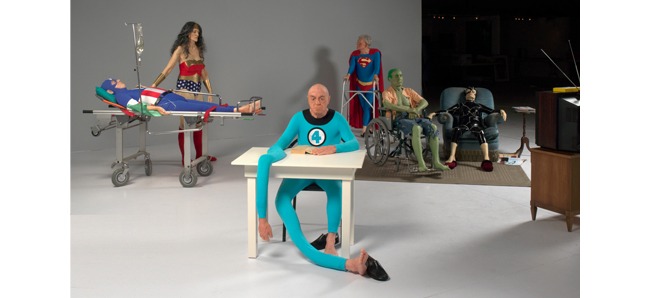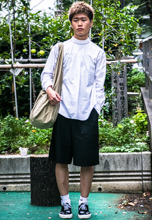Get inside ‘Medicine and Art’
Mori Art Museum shows the lifeblood of creativity

Gilles Barbier 'L'hospice' / 'The Nursing Home', 2002 photo courtesy of Mori Art Museum and Galerie G-P&N, Paris
Posted: Fri Dec 18 2009
One of the most enduring themes of art is the human body; the ancients idealised it, the Renaissance artists investigated it, and modern artists have played with, contorted and reinterpreted it in countless ways.
The Mori Art Museum’s latest exhibit, ‘Medicine and Art: Imagining a Future for Life and Love— Leonardo Da Vinci, Okyo, Damien Hirst’ explores this enduring circular relationship, from classic to innovative. Including pieces such as anatomy and surgical instruction texts and models, works depicting illness, doctors and their patients, vintage surgical instruments and prostheses, and modern works dealing with larger themes of life, death and biological science, the exhibit is not only extensive but also well rounded and balanced in its grounding in fine art and scientific reality.
The exhibit’s top billing goes to three artists, each of whom explore different aspects of the body, medicine, life and its conjoined twin, death. Of course, many will go to see the Da Vinci sketches, which are well known for their thorough clarity and insight into the workings of the body at a time when religious issues threatened advancement of any scientific research. The small yet powerful sketches and diagrams chosen for the exhibit sum up the essence of Da Vinci’s fascination with the body as being both powerful and delicate. Okyo, with whom many museum-goers may be unfamiliar, takes the idea of the human body and medicine one step further by examining its spiritual aspect. With a light touch, and spontaneous style that only highlights his extensive knowledge of anatomy, hangings depicting the fleeting nature of life or the curing of the spirit to heal the body. Finally, Damien Hirst brings a definite Young British Artist vibe with a surprisingly tame take on his central themes of life, death and his apparently interplay of distance between him and his subjects.
However, some of the more powerful images come along the themes of living, ageing and physical death. Photographer Walter Schels’ powerful and touching photos of terminally ill patients before and after their deaths reinterpret ideas of what death might look like. Magnus Wallin’s allegorically atmospheric video installation ‘Exercise Parade’ invites the spectator to literally enter into the scene using a double back projection technique. Lee Byun Ho’s hauntingly pneumatic ‘Vanitas Bust’ plays tricks on the eyes, much like ageing does. Alvin Zafra’s ‘Argument from Nowhere’, which was made by rubbing a human skull on sandpaper, creates an unexpectedly soft gradient of monotones not unlike a watercolour.
Even the humorous aspect of our relationships with our bodies and their translation into a creative expression is given weight here. Jan Fabre’s ‘I Drive My Own Brains II’, Susie Freeman and Liz Lee’s contraceptive wedding dress ‘Jubilee’ and Gilles Barbier’s ageing superheroes in ‘L’Hospice’ give free reign to the sometimes ironically amusing yet poignant realisations about our impulses, reproductive choices and the realities of getting older.
In all, this multi-faceted approach to highlighting the bond between medicine and art is deftly executed in a way that engages the audience to really look at things they may turn away from, or otherwise not be able to see: the workings of the body and medicine, in all its slippery, clinical, and not-necessarily-objective glory.
‘Medicine and Art: Imagining a Future for Life and Love— Leonardo Da Vinci, Okyo, Damien Hirst’ is showing at the Mori Art Museum until Sun Feb 28, 2010.
Tags:
Tweets
- About Us |
- Work for Time Out |
- Send us info |
- Advertising |
- Mobile edition |
- Terms & Conditions |
- Privacy policy |
- Contact Us
Copyright © 2014 Time Out Tokyo










Add your comment